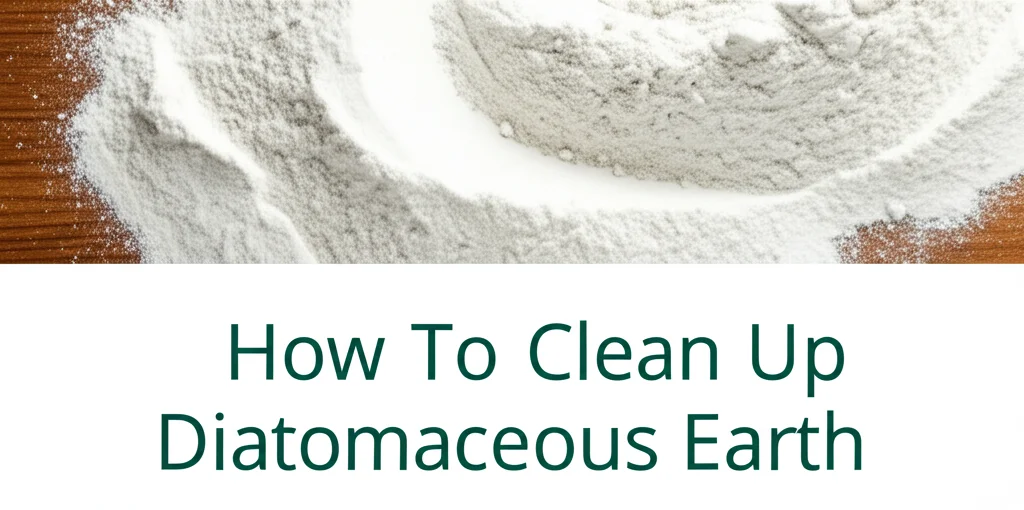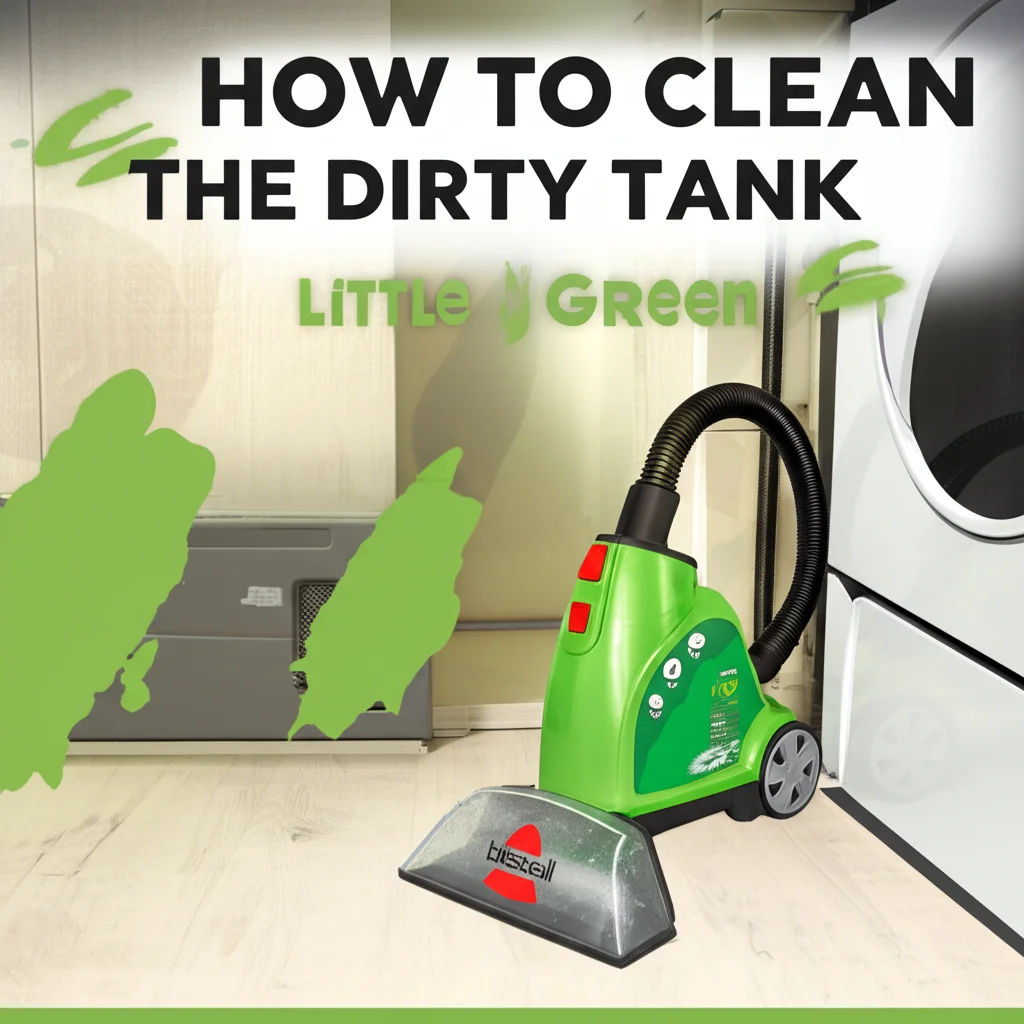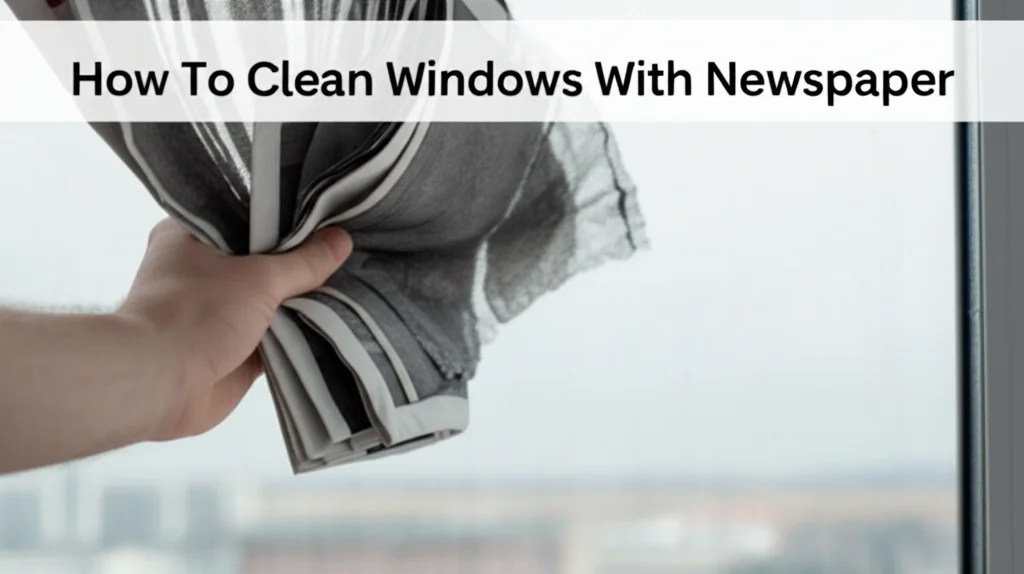· Cleaning Tips · 6 min read
How To Clean Up Diatomaceous Earth

Cleaning Up Diatomaceous Earth: A Simple Guide
Have you recently used diatomaceous earth (DE) for pest control or another purpose and now face a powdery mess? Don’t worry, cleaning up diatomaceous earth is usually straightforward, but it’s important to do it safely. Diatomaceous earth, while non-toxic, can be irritating to the lungs and eyes, so proper cleanup is key. This article will guide you through the best methods for cleaning up DE from various surfaces, ensuring a dust-free and safe environment. We’ll cover everything from floors and carpets to delicate surfaces, providing practical tips and tricks along the way.
Takeaway:
- Always wear a mask and eye protection during cleanup.
- Avoid vacuuming unless you have a HEPA filter vacuum.
- Damp mopping or wiping is generally the safest and most effective method.
- Proper disposal of collected DE is important.
What’s the best way to clean up diatomaceous earth?
The best way to clean up diatomaceous earth is to carefully sweep or gently wipe up the powder, avoiding creating dust. Use a damp cloth or mop for hard surfaces, and a soft brush for carpets, followed by a thorough vacuuming with a HEPA filter.
Understanding Diatomaceous Earth & Cleanup Concerns
Diatomaceous earth is a naturally occurring sedimentary rock composed of fossilized remains of diatoms, a type of algae. It’s commonly used as a natural pest control method, an absorbent, and even in some cleaning products. However, the fine powder can easily spread and become airborne. This is why careful cleanup is essential.
While DE isn’t chemically toxic, the fine particles can cause mechanical irritation. Inhaling the dust can irritate the lungs, and contact with eyes can cause discomfort. Therefore, protecting yourself during cleanup is paramount. Always prioritize safety by wearing appropriate protective gear. Understanding the nature of DE helps you approach the cleanup process with the right precautions.
Essential Safety Gear for Diatomaceous Earth Cleanup
Before you even think about starting to clean up, gather your supplies. Protecting yourself is the most important step. You’ll need a few key items to ensure a safe and effective cleanup.
- Dust Mask or Respirator: This prevents you from inhaling the fine DE particles. A simple dust mask is sufficient for small spills, but a respirator is recommended for larger areas.
- Eye Protection: Goggles or safety glasses will shield your eyes from irritation.
- Gloves: While not strictly necessary, gloves can prevent skin dryness and irritation, especially with prolonged contact.
- Cleaning Tools: These will vary depending on the surface (see sections below), but generally include a soft brush, damp cloths, a mop, and a vacuum cleaner (preferably with a HEPA filter).
- Sealable Bag or Container: For disposing of the collected DE.
Cleaning Diatomaceous Earth from Hard Floors
Hard floors like tile, wood, or laminate are relatively easy to clean when it comes to diatomaceous earth. The key is to avoid spreading the dust. Here’s a step-by-step guide:
- Gentle Sweeping: Start by gently sweeping the DE into a pile. Use a soft-bristled broom to avoid scattering the powder.
- Damp Mopping: Lightly dampen a mop (microfiber is ideal) with water. Avoid soaking the mop, as excess water can create a slurry.
- Wipe Up the Pile: Carefully mop up the pile of DE. Rinse the mop frequently in clean water.
- Final Wipe Down: Follow up with a clean, damp cloth to ensure all traces of DE are removed.
- Disposal: Place the collected DE into a sealable bag or container for disposal. You can find more information on disposal in a later section.
For stubborn residue, you can add a small amount of mild dish soap to the water, but be sure to rinse thoroughly afterward. If you’re cleaning hardwood floors, be extra cautious with water to prevent damage. Consider using a wood floor cleaner specifically designed for your floor type – you can learn more about hardwood floor cleaning here.
Tackling Diatomaceous Earth on Carpets & Rugs
Carpets and rugs present a slightly bigger challenge, as DE can get embedded in the fibers. However, with the right approach, you can effectively remove it.
- Soft Brush: Use a soft-bristled brush to gently loosen the DE from the carpet fibers. Brush in one direction to avoid pushing it deeper.
- Vacuum with HEPA Filter: This is crucial. A standard vacuum cleaner will simply spread the DE dust into the air. A HEPA filter traps the fine particles, preventing them from being recirculated.
- Repeat as Needed: You may need to brush and vacuum several times to remove all the DE.
- Spot Clean (Optional): If any residue remains, you can try spot cleaning with a damp cloth. Blot, don’t rub, to avoid damaging the carpet fibers.
Avoid using a steam cleaner, as the heat can potentially bind the DE to the carpet fibers. If you’re dealing with a particularly stubborn stain or odor after cleaning, you might find helpful tips here.
Cleaning DE from Upholstery & Fabrics
Upholstery and delicate fabrics require a gentle touch. Here’s how to clean up DE from these surfaces:
- Gentle Brush: Use a soft brush (like a paintbrush) to gently remove the DE from the fabric.
- Vacuum with Brush Attachment: Use the brush attachment on your HEPA filter vacuum to carefully vacuum the surface.
- Spot Test: Before using any cleaning solution, test it on an inconspicuous area of the fabric to ensure it doesn’t cause discoloration or damage.
- Damp Cloth (If Needed): If necessary, lightly dampen a cloth with water and gently blot the affected area.
Avoid using harsh chemicals or abrasive cleaners on upholstery. If you’re unsure about cleaning a particular fabric, consult a professional upholstery cleaner.
Safe Disposal of Collected Diatomaceous Earth
Once you’ve collected the DE, proper disposal is important. While it’s not considered hazardous waste, it’s best to avoid flushing it down the toilet or putting it in the kitchen garbage disposal.
- Sealable Bag or Container: Place the collected DE in a sturdy, sealable plastic bag or container.
- Outdoor Trash: Dispose of the sealed bag in your outdoor trash bin.
- Garden Use (Optional): If you’re using DE for pest control in your garden, you can carefully sprinkle the collected DE around plants to continue its pest-repelling properties. However, avoid applying it directly to flowering plants to protect pollinators.
Frequently Asked Questions About Cleaning Up Diatomaceous Earth
- Can I just vacuum up diatomaceous earth? No, unless you have a vacuum with a HEPA filter. A regular vacuum will spread the dust into the air.
- Is diatomaceous earth harmful to pets? While generally non-toxic, it can cause irritation to their eyes and respiratory system. Keep pets away during cleanup and ensure the area is thoroughly cleaned.
- What if I accidentally inhaled some DE? Drink plenty of water and get fresh air. If you experience persistent coughing or difficulty breathing, consult a doctor.
- Can I use a wet/dry vac to clean up DE? Yes, but only if the vac is equipped with a HEPA filter. Otherwise, you’ll just be spreading the dust.
Conclusion: A Dust-Free Finish
Cleaning up diatomaceous earth doesn’t have to be a daunting task. By following these simple steps and prioritizing safety, you can effectively remove DE from any surface. Remember to always wear a mask and eye protection, use a HEPA filter vacuum when possible, and dispose of the collected DE properly. With a little care and attention, you can maintain a clean and healthy home environment. If you’re looking for more comprehensive cleaning guides, explore our other articles on cleaning floors and maintaining a spotless home.




